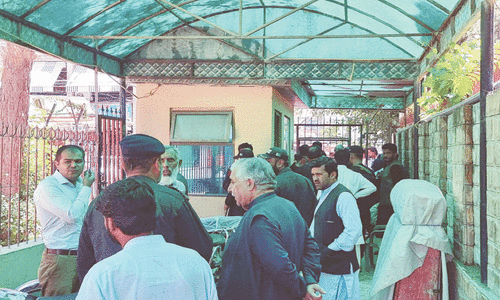The province of Sindh has three distinct physiographic regions - rive rine and irrigated alluvial region, sandi eastern region (Thar desert), and rocky western region (Khirthar range).
The land use in the rive rine and irrigated region is related to agriculture and forestry. According to the Sindh forest department statistics, the riverine belt of the province comprises riverine forest spread over an area of 241,217 hectares.
The rive rine forest lies within the protective embankments on either side of the River Indus. Reportedly, rive rine forest are managed on clear felling silvi culture system which is rational, economical and sustainable in flood plains of lower Indus. Clear felled areas of rive rine forest were fully regenerated and restocked a year later with natural inundation.
But contrary to the facts mentioned above, a survey of the rive rine forest area in District Ghotki, Sukkur and Khairpur undertaken by this scribe has indicated that the existing system of riverine forest management is not sustainable and likely to crumble with the passage of time if almost total absence of the forest department and free-for-all like situation continues further for longer period.
No doubt one of the important reasons of deterioration of forest wealth in the riverine belt is absence of inundation water since about a decade, however, the main reason is practice of illegal island crop cultivation (wheat and cotton) removing long established forest vegetations and trees in the riverine belt.
Among the dominant plant species in this tropical forest area are Acacia nilotica and Prosopis spicigera. Other plant species prevalent in the forest are Populas eupharatica, Tamarix articulate, Moringa and numerous herbs and shrubs.
However, among the weed flora of riverine belt one dominant weed species is Phyla Nodiflora, as identified by Professor Dr Raza Bhatti of the Botany Department, Shah Latif University, Khairpur. This weed is locally known as "Buccan."
Phyla nodifolia weed serves as an alternate host of White Rice Plant Hopper (Cofana spectra). During rice growing season migration of this hopper has been observed by this scribe from wed flora to its host plant (rice crop).
Hitherto, white plant hopper has been found or considered as a minor pest of rice crop. The major one is known as Whitebacked Plant hopper (Sogatella sp.) which often assumes serious proportion causing severe damage to rice crop, especially Irri varieties in the upper Sindh region.
Unfortunately wheat crop as island crop in the riverine belt has provided another host to the white plant hopper which is not a good omen. This is because its severe infestation may invite insecticidal spray for its control allowing resurgence of secondary pest problem.
Presently wheat is the only major cereal crop where pesticide use is almost nil. During survey counting of plant hopper revealed 15 to 20 adult hoppers per square feet which was of course a very high population. Despite heavy population however damage to the young 2 to 4 stage wheat crop was not apparent except on few leaves showing whit is patches following suction of saps by this sucking pest (white plant hopper).
Its reason may be fresh migration of adult population of the hoppers from the vegetation in the vicinity of the very crop island. Here it would be proper to mention that such a phenomenon had been experienced during the early settlement of North America by the European colonist when agricultural crops were grown in small patches surrounded by large tract of uncultivated land, crops were like small island in a vast matrix of natural vegetation.
However, as agriculture developed this matrix of forest vegetation dwindled fast with the passage of time. Thus from the very fact it may be inferred that with the dwindling of riverine forest, problem of white plant hopper will automatically dwindled. Hence no need to worry. What a pity?
SUGGESTION: Growers of riverine belt who have undertaken cultivation of wheat crop adjoining forest vegetation should be advised not to be panicky with white plant hopper, tip burning of wheat crop could be addressed with fertilizer application.
e-mail: agriwatch@hotmail.com.











































Dear visitor, the comments section is undergoing an overhaul and will return soon.